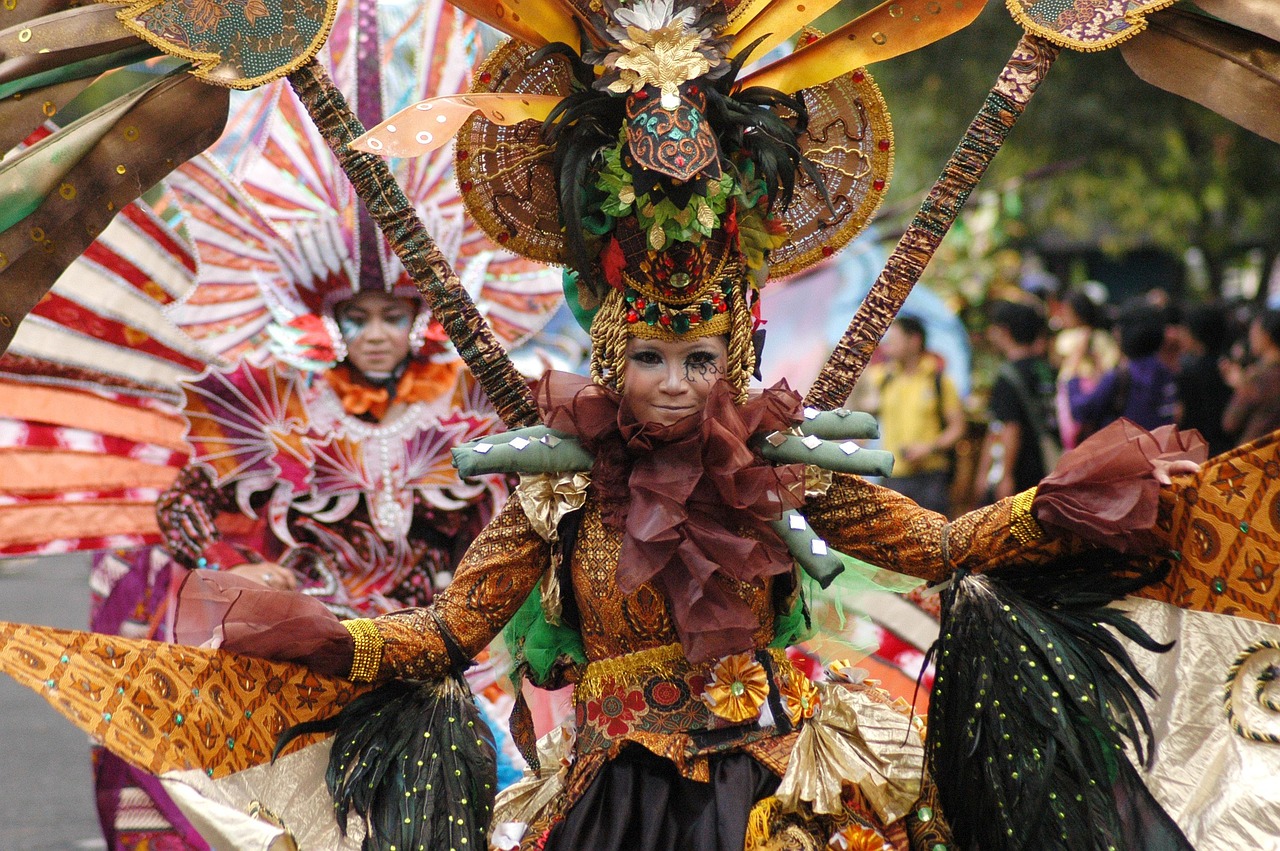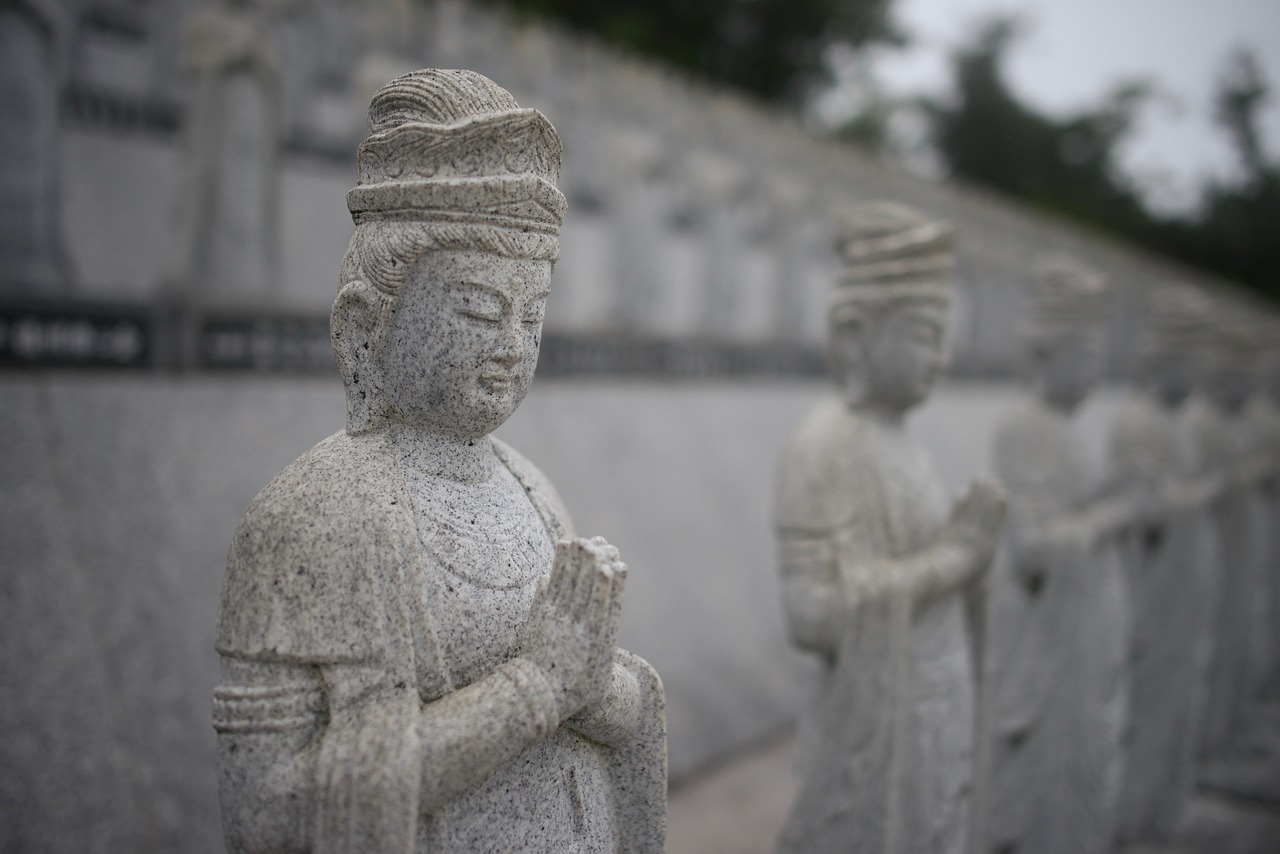This article delves into the rich history and development of the Bengali language, tracing its origins, influences, and significance in literature and culture over the centuries. The Bengali language, spoken by millions, has evolved through a complex interplay of historical, cultural, and linguistic factors that have shaped its unique identity.
Origins of the Bengali Language
The Bengali language has its roots in the Indo-Aryan languages, evolving from Sanskrit and Prakrit. This evolution highlights the language’s distinctive characteristics and its journey through time.
Historical Influences on Bengali
- Persian Influence: The Persian empire’s presence in Bengal introduced a wealth of vocabulary and stylistic elements.
- Arabic Contributions: Arabic words and idioms have enriched Bengali, particularly in religious and cultural contexts.
- Impact of English: The British colonial period brought English into the linguistic mix, further diversifying Bengali.
The Development of Bengali Literature
Bengali literature boasts a rich tradition, with its evolution reflecting the language’s growth. Key literary figures such as Rabindranath Tagore and Kazi Nazrul Islam have made significant contributions, shaping the literary landscape.
Regional Variations of Bengali
As Bengali is spoken in various regions, distinct dialects have emerged. Understanding these differences is crucial for appreciating the language’s diversity.
- Dialectal Differences: Different regions exhibit unique dialects, reflecting local identities.
- Impact of Migration: Migration patterns have introduced new vocabulary and pronunciation, further influencing dialects.
The Future of the Bengali Language
As globalization continues, the Bengali language faces both challenges and opportunities. Preserving its rich heritage while adapting to modern contexts will be essential for its future.
In conclusion, the Bengali language’s evolution is a testament to its resilience and adaptability. Its historical significance and cultural richness ensure its continued relevance in the global linguistic landscape.

Origins of the Bengali Language
The Origins of the Bengali Language
The Bengali language, known as Bangla to its speakers, boasts a rich history that traces back to the ancient Indo-Aryan languages. Its evolution is deeply intertwined with Sanskrit and Prakrit, two languages that have significantly influenced its phonetics, vocabulary, and grammatical structures. Understanding the origins of Bengali not only highlights its unique characteristics but also sheds light on its cultural significance.
Initially, Bengali emerged from the eastern dialects of the Magadhi Prakrit, which was spoken in the region that is now West Bengal and Bangladesh. Over centuries, it underwent a transformation, gradually differentiating itself from its linguistic relatives. This evolution can be attributed to various socio-political and cultural influences that shaped the region.
Influence of Sanskrit
- The profound impact of Sanskrit on Bengali is evident in its extensive vocabulary. Many words in Bengali have their roots in Sanskrit, reflecting the historical and cultural connections between the two languages.
- Moreover, the grammatical frameworks of Bengali exhibit similarities to Sanskrit, particularly in verb conjugations and sentence structures, which have evolved yet retained some original features.
Historical Interactions
Throughout history, Bengali has absorbed elements from various languages due to trade, conquest, and cultural exchange. The influence of Persian and Arabic is notable, especially during the Mughal era, when many Persian words were incorporated into everyday usage. This blend of languages has enriched Bengali, making it a diverse and multifaceted medium of communication.
Modern Significance
Today, Bengali is the seventh most spoken language in the world, with over 230 million speakers. It serves not only as a means of communication but also as a vessel for the rich literary and cultural heritage of the Bengali people. Understanding its origins is crucial for appreciating its evolution and the role it plays in contemporary society.
In conclusion, the Bengali language stands as a testament to the historical journey of its people, reflecting their struggles, triumphs, and cultural richness. Its roots in the Indo-Aryan languages, particularly Sanskrit and Prakrit, provide a fascinating glimpse into its past and underscore its significance in the present.

Historical Influences on Bengali
The Evolution of the Bengali Language: A Historical Perspective
The Bengali language is a testament to the rich tapestry of cultural and historical influences that have shaped it over centuries. One of the most significant aspects of its development is the historical influences that have contributed to its unique character and diversity.
Bengali has been profoundly shaped by various historical interactions, particularly with Persian, Arabic, and English. These influences began during the medieval period and have continued to evolve, enriching the language and making it multifaceted.
- Persian Influence: The arrival of Persian culture in Bengal during the Mughal era introduced a wealth of vocabulary and literary styles. Many Bengali words related to administration, art, and culture have Persian roots, reflecting the language’s adaptability.
- Arabic Contributions: The influence of Arabic is particularly evident in religious and philosophical contexts. Arabic loanwords have permeated Bengali, especially in Islamic literature and scholarly texts, enhancing its lexicon with terms related to religion and ethics.
- English Impact: The British colonial period brought English into the Bengali language, particularly in education, governance, and trade. This has resulted in a significant number of English loanwords, which are now commonplace in everyday conversation.
The blending of these languages has created a rich vocabulary that allows Bengali speakers to express a wide array of ideas and emotions. This linguistic fusion is not just a reflection of historical events but also a testament to the resilience and dynamism of the Bengali people.
In conclusion, the have played a crucial role in shaping its identity. The language’s ability to absorb and integrate elements from Persian, Arabic, and English has made it a vibrant and evolving medium of expression, reflecting the rich cultural heritage of Bengal.
The Role of Sanskrit
The Role of Sanskrit in Shaping Bengali
The influence of Sanskrit on the Bengali language is both profound and multifaceted. As an ancient language, Sanskrit has served as a foundational pillar for many languages in the Indian subcontinent, and Bengali is no exception. This section delves into the significance of Sanskrit in shaping Bengali, highlighting its contributions to vocabulary, grammar, and cultural identity.
One of the most notable aspects of Sanskrit’s influence is the extensive vocabulary that Bengali has adopted. Numerous words in Bengali can be traced directly back to their Sanskrit origins. For instance, the Bengali words শিক্ষা (shikkha) meaning “education” and জ্ঞান (gyan) meaning “knowledge” are derived from the Sanskrit शिक्षा (śikṣā) and ज्ञान (jñāna), respectively. This lexical borrowing not only enriches the language but also strengthens its cultural connection to ancient Indian traditions.
Moreover, the grammatical structures of Bengali exhibit significant influences from Sanskrit. The use of inflections, which is a hallmark of Sanskrit grammar, can also be observed in Bengali. For instance, the formation of tenses and the use of postpositions in Bengali reflect a similar pattern found in Sanskrit. This grammatical alignment highlights the historical ties between the two languages and showcases how Bengali has evolved while retaining elements of its ancestral tongue.
Additionally, the cultural significance of Sanskrit in Bengali literature cannot be overstated. Many classical Bengali texts draw upon themes, narratives, and stylistic elements rooted in Sanskrit literature. This intertextuality not only preserves the literary traditions of Bengal but also serves as a bridge connecting contemporary Bengali writers to their ancient literary heritage.
In conclusion, the role of Sanskrit in shaping Bengali is a testament to the enduring legacy of this ancient language. Its impact is evident in the vocabulary, grammatical structures, and cultural narratives that continue to influence Bengali today. Understanding this relationship is crucial for appreciating the richness and depth of the Bengali language.
Loanwords from Sanskrit
play a significant role in the Bengali language, showcasing its rich cultural and linguistic heritage. This section delves into specific examples of these loanwords and their meanings, illustrating the deep connections between Bengali and its ancient roots.
The influence of Sanskrit on Bengali is evident in various domains, including everyday vocabulary, religious texts, and literary works. Many words used in Bengali today can be traced back to their Sanskrit origins, highlighting the historical intertwining of these languages.
| Loanword | Meaning | Origin |
|---|---|---|
| অগ্নি (Agni) | Fire | Sanskrit |
| মন্ত্র (Mantra) | Chant or hymn | Sanskrit |
| পুস্তক (Pustak) | Book | Sanskrit |
| দেব (Deb) | God | Sanskrit |
| শিক্ষা (Shiksha) | Education | Sanskrit |
These examples illustrate how Bengali has retained a wealth of vocabulary from Sanskrit, which not only enriches the language but also connects speakers to a broader cultural and historical context. The presence of these loanwords is particularly significant in literary and religious texts, where they convey profound meanings and concepts that are integral to Bengali identity.
In conclusion, the in Bengali are more than mere linguistic borrowings; they are a testament to the language’s evolution and its enduring ties to its ancient roots. Understanding these words enhances our appreciation of Bengali’s rich tapestry and its cultural significance.
Grammatical Structures
The Grammatical Framework of Bengali: A Deep Dive
The Bengali language, with its rich tapestry of history and evolution, showcases a fascinating interplay of grammatical structures influenced significantly by Sanskrit. This article delves into the intricate ways in which these grammatical frameworks have developed over time and their relevance in contemporary usage.
Understanding the Influence of Sanskrit on Bengali Grammar
At its core, the grammatical structure of Bengali is deeply rooted in Sanskrit, an ancient language that has shaped many modern Indo-Aryan languages. The influence is evident in various aspects:
- Word Formation: Bengali employs numerous derivational affixes that are reminiscent of Sanskrit, allowing for the creation of new words while retaining a sense of historical continuity.
- Sentence Structure: The typical subject-object-verb (SOV) order in Bengali sentences can be traced back to its Sanskrit origins, showcasing a similarity that aids in comprehension and fluency.
- Use of Postpositions: Unlike English, Bengali uses postpositions instead of prepositions, a feature that aligns closely with Sanskrit grammar.
The Evolution of Grammatical Structures
Over the years, Bengali grammar has evolved, adapting to cultural shifts and linguistic influences. While the foundational elements remain intact, modern usage has introduced variations:
- Influence of Other Languages: The interaction with Persian, Arabic, and later English has led to the incorporation of new grammatical forms and vocabulary.
- Dialectal Variations: Different regions exhibit unique grammatical nuances, reflecting the diverse cultural landscapes across Bengal.
Relevance of Grammatical Structures Today
Today, the grammatical frameworks derived from Sanskrit are not only essential for understanding the language but also play a crucial role in educational settings. Bengali language education emphasizes these structures to help learners grasp the intricacies of the language.
In conclusion, the grammatical structures of Bengali, heavily influenced by Sanskrit, continue to evolve while remaining relevant in modern contexts. Understanding these frameworks enriches our appreciation of Bengali as a living, dynamic language.
The Influence of Persian and Arabic
The historical presence of Persian and Arabic in Bengal has significantly shaped the Bengali language, introducing a rich tapestry of vocabulary and stylistic elements that continue to resonate today. This influence dates back to the medieval period when Bengal was a center of trade and cultural exchange, facilitating interactions between different linguistic communities.
During the Delhi Sultanate and later the Mughal Empire, Persian became the court language, leading to its adoption in administration and literature. As a result, many Persian words were assimilated into Bengali, especially in fields such as literature, art, and administration. For instance, terms related to governance and culture, such as darbar (court), shahr (city), and khazana (treasure), are of Persian origin.
Similarly, Arabic’s influence is profound, primarily through the introduction of Islamic culture and religion in Bengal. The language brought with it a plethora of vocabulary, particularly in the realms of religion, science, and philosophy. Words like kitab (book) and ilm (knowledge) exemplify this linguistic infusion. The incorporation of Arabic terms has enriched Bengali, allowing speakers to express complex ideas with more nuance.
Moreover, the stylistic elements derived from Persian and Arabic have influenced Bengali poetry and prose. The use of metaphor, imagery, and rhyme in Bengali literature owes much to Persian literary traditions, which have been adapted and transformed by Bengali poets and writers. This blending of styles has resulted in a unique literary aesthetic that defines Bengali literature.
In conclusion, the historical contact with Persian and Arabic has led to a considerable enrichment of the Bengali language, making it a vibrant and multifaceted medium of expression. Understanding these influences not only highlights the linguistic diversity of Bengali but also showcases the cultural exchanges that have shaped its evolution over the centuries.

The Development of Bengali Literature
is a fascinating journey that mirrors the evolution of the Bengali language itself. This literary tradition, rich and diverse, has produced a plethora of works that have significantly influenced both regional and global literature.
From its early forms, Bengali literature has been shaped by various historical and cultural movements. The medieval period saw the emergence of devotional poetry, with figures like Chaitanya Mahaprabhu and Ramprasad Sen leading the way. Their works often focused on themes of spirituality and devotion, laying a strong foundation for future literary endeavors.
As we moved into the 19th century, the Bengal Renaissance marked a pivotal moment in Bengali literature. This era produced luminaries such as Rabindranath Tagore, the first non-European Nobel laureate in Literature. Tagore’s poetry and prose explored the complexities of human emotion and social issues, making profound impacts on both Bengali and world literature. His works, such as Gitanjali, remain timeless classics.
In the 20th century, the literary landscape expanded further with the rise of modernism. Writers like Sukanta Bhattacharya and Jibanananda Das introduced new themes and styles, reflecting the changing societal dynamics. Their contributions emphasized the importance of individual experience and the nuances of everyday life.
The post-independence era saw the emergence of a new wave of writers, including Shirshendu Mukhopadhyay and Mahasweta Devi, who tackled contemporary issues such as social justice and identity. Their works have not only enriched Bengali literature but have also resonated with global audiences.
Today, Bengali literature continues to thrive, with authors like Shashi Tharoor and Jhumpa Lahiri gaining international acclaim. The digital age has further transformed the literary scene, allowing for greater accessibility and innovation in storytelling.
In conclusion, the development of Bengali literature is a testament to the resilience and creativity of its writers. As it continues to evolve, it remains an essential part of the cultural fabric of Bengal and beyond.
Classical Bengali Literature
has played a crucial role in shaping the modern literary landscape of Bengal. This period, spanning from the 8th to the 19th century, is characterized by a rich tapestry of poetic and prose works that laid the groundwork for contemporary Bengali literature.
One of the most significant contributions of classical Bengali literature is its linguistic evolution. Early texts, such as the Charyapada, which dates back to the 8th century, are considered the oldest examples of Bengali literature. These works not only highlight the phonetic and grammatical structures of early Bengali but also reflect the cultural and spiritual ethos of the time.
The medieval period saw the emergence of notable poets like Jayadeva and Chandidas, whose works infused a sense of regional identity into the language. Their poetry often explored themes of love, devotion, and nature, enriching the emotional depth of Bengali literature. The Vaishnavism movement, in particular, significantly influenced literary expressions, leading to the creation of devotional songs and narratives that resonate even today.
Furthermore, the introduction of prose during the 19th century marked a pivotal shift in Bengali literature. Writers like Bankim Chandra Chattopadhyay and Rabindranath Tagore began to explore complex social and philosophical themes, expanding the scope of literary expression. Tagore’s works, in particular, not only garnered international acclaim but also established Bengali as a language of profound artistic merit.
In conclusion, classical Bengali literature laid a robust foundation for modern works through its rich linguistic heritage and thematic diversity. The evolution from poetry to prose reflects the dynamic nature of the language, ensuring its relevance in contemporary literary discourse.
Modern Bengali Literature
has emerged as a vibrant and dynamic expression of the Bengali language, reflecting its adaptability and relevance in today’s world. This section delves into the contemporary authors who are reshaping the literary landscape, highlighting their unique contributions and the themes they explore.
The evolution of Bengali literature in the modern era is marked by a diverse range of voices and styles. Authors such as Shirshendu Mukhopadhyay, Mahasweta Devi, and Sunil Gangopadhyay have brought forth narratives that resonate with the complexities of contemporary society. Their works often address pressing social issues, cultural identity, and the struggles of the marginalized, making literature a powerful medium for social change.
One of the most significant aspects of modern Bengali literature is its genre diversity. From novels and short stories to poetry and essays, contemporary writers experiment with forms and styles, often blending traditional elements with modern themes. This fusion not only enriches the literary experience but also attracts a wider audience, including younger generations who seek relatable content.
Moreover, the rise of digital platforms has transformed the way Bengali literature is consumed and appreciated. Online publications and e-books have made literature more accessible, allowing authors to reach readers beyond geographical boundaries. This shift has fostered a new wave of writers who are leveraging technology to share their stories and engage with their audience.
In conclusion, modern Bengali literature is a testament to the language’s resilience and its ability to evolve with the times. As contemporary authors continue to push boundaries and explore new themes, they play a crucial role in shaping the future of Bengali literature, ensuring that it remains a vital part of cultural discourse.

Regional Variations of Bengali
play a significant role in understanding the language’s richness and diversity. Spoken primarily in Bangladesh and the Indian state of West Bengal, Bengali has evolved into numerous dialects, each reflecting unique cultural and geographical influences. This article delves into the intricacies of these dialects, their characteristics, and the importance of recognizing these variations.
The dialects of Bengali can be broadly categorized into two main groups: Standard Bengali and Regional Dialects. Standard Bengali, often used in formal settings and literature, serves as the linguistic benchmark. In contrast, regional dialects exhibit distinct phonetic, lexical, and grammatical features that can vary significantly from one area to another.
- Dialectal Differences: Key dialects such as Dhakaiya, spoken in Dhaka, and Chittagongian, from the Chittagong region, showcase unique pronunciation and vocabulary. For instance, Dhakaiya speakers might use words like “bari” for home, while Chittagongians may say “bari” but pronounce it differently.
- Impact of Migration: The movement of people across regions has further influenced these dialects. Migrants often bring their linguistic nuances, leading to the incorporation of new words and expressions into local dialects. This phenomenon can be observed in urban areas where diverse populations interact.
Understanding these dialectal variations is crucial for appreciating the linguistic diversity of Bengali. It not only enriches communication but also fosters a deeper connection to the cultural heritage of the Bengali-speaking community. Each dialect carries its own history and stories, making the language a vibrant tapestry of human expression.
In conclusion, the regional variations of Bengali highlight its dynamic nature and the influence of geography and culture on language. Recognizing and valuing these differences is essential for anyone interested in the Bengali language, whether for academic, personal, or professional reasons.
Dialectal Differences
The Bengali language, rich in its cultural and historical significance, showcases a remarkable variety of dialects that not only reflect the linguistic diversity of the regions where it is spoken but also embody the unique identities and traditions of its speakers. Understanding these dialectal differences is essential for appreciating the cultural nuances that define the Bengali-speaking community.
Among the most prominent dialects are:
- Standard Bengali: Predominantly spoken in Kolkata and Dhaka, this dialect serves as the lingua franca of Bengali speakers. It is characterized by its formal grammar and vocabulary, making it the preferred choice for education and media.
- Chittagong Dialect: Spoken in the southeastern region of Bangladesh, this dialect features unique phonetic traits and vocabulary, influenced by the local culture and geography. For instance, the pronunciation of certain consonants can differ significantly from Standard Bengali.
- Rangpuri: Found in the northern regions, particularly in parts of Bangladesh and India, Rangpuri is known for its distinct intonation and lexical choices. It reflects the historical interactions with neighboring languages, adding to its richness.
- Varendra: This dialect, prevalent in the northern districts of Bengal, showcases a blend of influences from both Bengali and the surrounding languages, resulting in a unique linguistic identity.
Each dialect not only serves as a means of communication but also as a vessel of cultural heritage. The variations in pronunciation, vocabulary, and grammatical structures highlight the regional identities of Bengali speakers. Moreover, these dialects often carry stories, folklore, and traditions that are integral to the communities they represent.
In conclusion, the dialectal differences within the Bengali language are a testament to its dynamic nature and the rich tapestry of cultures it encompasses. Recognizing and valuing these variations is crucial for fostering a deeper understanding of the Bengali language and its speakers.
Impact of Migration on Dialects
The evolution of the Bengali language has been significantly shaped by migration, which has introduced a rich tapestry of influences on its dialects. As people moved across regions and borders, they brought with them their unique linguistic traits, resulting in a dynamic interplay of vocabulary, pronunciation, and grammatical structures.
Historically, migration within the Indian subcontinent has been a common phenomenon. Trade routes, invasions, and cultural exchanges have facilitated the movement of communities, each contributing to the linguistic landscape of Bengali. For instance, the influx of Muslim traders and settlers from the Middle East and Central Asia during the medieval period introduced numerous Persian and Arabic words into the Bengali lexicon. This not only enriched the language but also influenced its phonetic characteristics, leading to distinct regional dialects.
Moreover, the migration of Bengali speakers to different parts of India and abroad has resulted in the creation of various dialects, each with its unique flavor. For example, the dialects spoken in West Bengal differ from those in Bangladesh, reflecting the cultural and historical contexts of these regions. The interactions with local languages and communities in these areas have further diversified the dialects, introducing new vocabulary and altering pronunciation.
In recent years, the global diaspora of Bengali speakers has continued to shape the language. Communities in countries such as the United States, United Kingdom, and Canada have developed their own dialects, incorporating elements from the dominant languages of their new homes. This blending of languages not only showcases the adaptability of Bengali but also highlights the ongoing evolution of its dialects.
In conclusion, migration has played a pivotal role in the evolution of Bengali dialects, facilitating a continuous exchange of linguistic elements. Understanding these influences is essential for appreciating the richness and diversity of the Bengali language as it continues to evolve in a globalized world.

The Future of the Bengali Language
As the world becomes increasingly interconnected through globalization, the Bengali language stands at a pivotal crossroads, facing both significant challenges and exciting opportunities. This dynamic environment presents a unique chance for the language to evolve while preserving its rich heritage.
One of the primary challenges is the dominance of global languages, particularly English. With the rise of digital communication and media, younger generations may find themselves gravitating towards English for its perceived advantages in education and employment. This trend poses a risk of diminishing the use of Bengali in everyday conversations and formal settings.
However, challenges often pave the way for opportunities. The increasing interest in cultural diversity has led to a resurgence in the appreciation of regional languages, including Bengali. The rise of social media platforms has also provided a space for Bengali speakers to connect, share, and promote their language and culture globally. This digital presence can help foster a renewed sense of identity among speakers.
Moreover, the Bengali diaspora plays a crucial role in the language’s future. As Bengali communities expand worldwide, they carry their language and culture with them, creating a global network that can enhance its relevance and usage. Language courses, cultural festivals, and online content in Bengali can further strengthen this connection.
| Challenges | Opportunities |
|---|---|
| Dominance of English | Resurgence in cultural appreciation |
| Reduced usage in media | Digital platforms for promotion |
| Generational language shift | Global diaspora engagement |
In conclusion, while the Bengali language faces challenges due to globalization, it also has numerous opportunities for growth and revitalization. By embracing its rich heritage and adapting to modern contexts, Bengali can continue to thrive, ensuring its survival for future generations.


























































